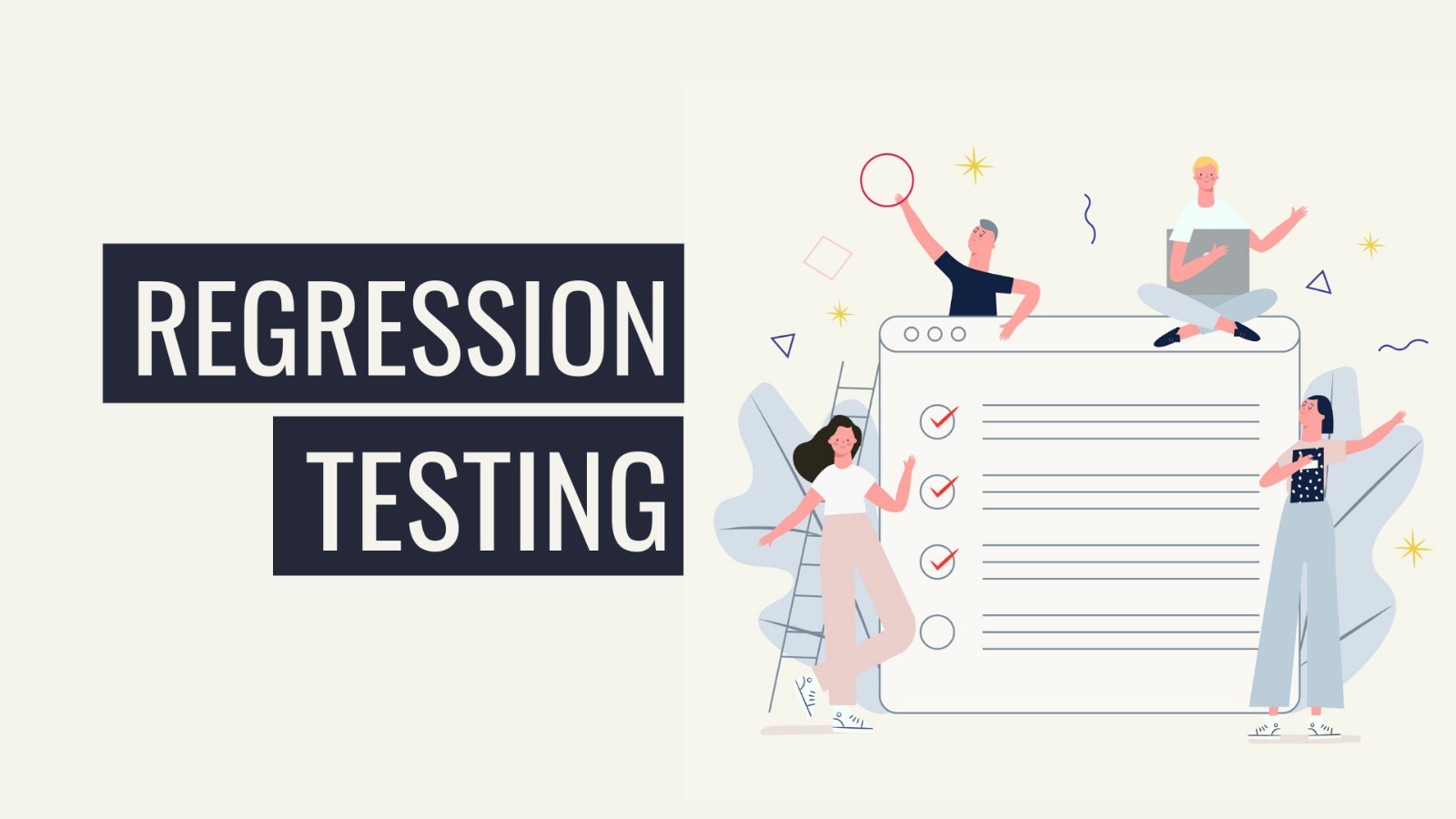In the process of software development, the codebase of a product is frequently modified before its launch, which can introduce unexpected changes or lead to incorrect system behavior. Even after development, when new updates are introduced, there is a risk of impacting the product’s functionality. To address this challenge, a solution is needed to verify that the product maintains its intended functionality despite code changes. This is where Regression testing becomes essential, as it ensures that the core functionality of the product remains intact during updates or code modifications.
What is Regression testing?
Regression testing is a form of software testing conducted to ensure that recent code modifications, fixes, or feature additions, deletions, or updates have not negatively impacted the existing, untouched features of the product. For example, if a developer makes changes or fixes issues in the login page of a website, it should not affect other features like the home page.
In simple terms, regression testing is performed to determine if the new code changes have any impact on the existing functionalities and to verify that the old code continues to function correctly after the introduction of updates. This testing involves re-executing previously used test cases to validate the system’s stability and functionality.
Types of Regression testing
Regression testing involves mainly three types of testing- Unit Regression Testing, Partial Regression Testing, and Full Regression Testing. Depending on the changes made, you can focus on one type of testing or execute all three.
1. Unit Regression testing
This type of testing focuses only on a single unit of code. In other words, it is about testing only the changes or modifications done by the developer and not the other aspects.
During unit regression testing, all the other functionalities of the system are blocked.
2. Partial Regression Testing
Partial Regression tests are done to test the modified part as well as the other features affected by it. The updated unit is tested in tandem with the other unit it interacts with. Now the question is how do you find the other impacted areas?
Well, before testing, an “impact analysis meeting” takes place between testing engineers and product managers where they discuss what other related features can be affected by making changes in a particular feature.
3. Full Regression Testing
Full or complete regression tests involve testing the changed parts as well as other remaining parts of the software. In general, it is about testing the entire software. No matter where the changes have been implemented, the entire application is tested.
This is done when the product goes under a lot of code changes or the foundation of the code has been touched, so it becomes imperative to test the overall product functionality.
Based on the magnitude of the changes made, you can determine the most suitable type of regression testing for your needs.
Why is Regression testing important?
Software updates are an integral part of product development, necessary to meet evolving user needs and keep pace with technological advancements. However, these updates can introduce unforeseen issues that may impact the software’s functionality and stability. Regression testing plays a crucial role in identifying and resolving software bugs, errors, and issues that may arise from code changes, ensuring the overall quality and performance of the product. Here are some reasons that highlight the importance of regression testing:
- Enhances software quality Regression testing verifies that the existing system functionalities remain intact after updates, while also incorporating new features to improve the overall performance and efficiency of the software.
- Identifies errors before deployment: Introducing changes and modifications to software can be challenging, and post-release setbacks can be costly. Regression testing allows for the early detection and mitigation of errors, minimizing risks and saving the product from potential failures.
Regression testing and re-testing
It may appear similar as they both aim to validate the functionality of software, but they serve distinct purposes. Regression testing is conducted after introducing changes to the software to ensure that the modifications do not negatively impact the existing features. Its primary focus is on verifying that the overall system continues to operate smoothly as it did prior to the update. On the other hand, re-testing is performed to confirm that the software functions precisely as intended, typically after addressing identified bugs or issues. It aims to validate whether previously failed test cases now pass successfully after the necessary fixes have been implemented. In summary, regression testing emphasizes the impact of changes on the system’s functionality, while re-testing verifies the proper functioning of the software in accordance with its design.
Implementing regression testing
It is crucial whenever software applications undergo updates. Below is a breakdown of the fundamental stages involved in the regression testing process, providing guidance on how to proceed.
- Bug Identification
Regression testing begins by gathering information about the required changes and debugging the code to identify any existing bugs. This step helps determine which other features may be affected when a particular feature is updated. - Compilation of Test Cases
Once the bugs have been identified and the necessary changes have been implemented, the team compiles the relevant test cases. These test cases are designed to verify if the changes made have impacted the software application beyond the areas that have been fixed. - Testing
The team conducts initial testing rounds to assess whether the program functions as expected after the code changes. It is essential to track any errors or system aspects that have been affected during this testing phase. Mapping out the affected areas helps determine which areas require further attention to ensure the retention of previous functionality. - Bug Fixing
Addressing or eliminating regression bugs is vital for the success of the product, even if it requires a significant investment of time and resources. Patience is necessary while addressing the failures identified during the initial testing rounds. - Subsequent Testing Rounds
Regression testing involves multiple rounds of testing and bug fixing. After the initial testing rounds, it is common to encounter repeated or new errors. Therefore, it is important to continue testing until the desired outcome is achieved.
Regression Testing Techniques
It can be carried out using the following techniques:
- Retest All:
This technique involves re-executing all the test cases in the existing test suite to ensure that no bugs have been introduced as a result of code changes. However, this method can be resource-intensive and time-consuming. - Regression Test Selection:
With this technique, selected test cases from the test suite are re-executed to verify if the modified code has impacted the software application. Test cases are categorized as reusable or obsolete. Reusable test cases can be used in future regression cycles, while obsolete test cases are excluded from subsequent cycles. - Prioritization of Test Cases:
In this regression testing technique, test cases are prioritized based on factors such as business impact, criticality, and frequency of use. High-priority test cases are executed first. By prioritizing test cases, the regression test suite can be significantly minimized. - Hybrid:
The hybrid approach combines regression test selection and prioritization of test cases. Test cases are selected based on their priority, and only those selected test cases are re-executed, rather than running the entire test suite.
By applying these regression testing techniques, you can effectively manage the testing process and ensure the integrity and stability of your software application during code changes and updates.
Regression testing in an Agile environment
It involves frequent changes to the codebase, impacting various parts of the software. The production process is divided into multiple sprints, with changes introduced in each sprint. Developers create a test suite to anticipate the effects of these changes on the software in each sprint.
In Agile, regression testing can be categorized into two types: sprint-level regression and end-to-end regression. Sprint-level regression testing focuses on verifying the functionality of the software application after each iteration or sprint. It ensures that the changes made in that particular sprint have not affected the overall functionality of the software.
On the other hand, end-to-end regression testing aims to validate the functionality of the software application after all the iterations or sprints have been completed. It ensures that the software remains fully functional and integrated, considering all the changes made throughout the Agile development process.
By performing both sprint-level regression testing and end-to-end regression testing in an Agile environment, teams can maintain the quality and stability of the software as it evolves through iterative development cycles.
Thank you for reading. For continued insights and in-depth discussions, please follow our blogs at Ezeiatech.







